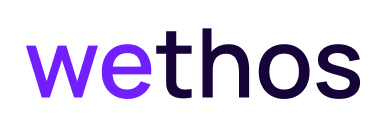What Others Charge Has Nothing to Do with Your Freelance Pricing
One thing that I always tell aspiring freelancers is: if you want to do it for the money, don’t.
I don’t say this to discourage anyone. I do say it to be realistic. Regularly, I host a thing called Freelance Talk, where I have 30-minute individual conversations with freelance writers. One question I always get is, “I see many writers charge XYZ, how can I do the same?” While I'm an advocate for charging what your skills and services are worth, I’m not an advocate for ruminating on other freelancers’ rates.
The pitfalls of basing your rates on what other freelancers charge
Here is a very common scenario: Sarah is new to freelancing. She saw an Instagram post from Imani, another freelancer, who shares that she charges $1,000 per blog post. Sarah spends the next 3 months building her business just like Imani’s. She put Imani on a pedestal and wants to be just like her, charging $1,000 per blog post.
Let’s cut that short.
Now, if you’re in this kind of scenario, no judgment from me. We all have to start somewhere. The problem with this is that we rarely know the full story of someone else’s freelance journey. Sarah only knows that Imani charges $1,000 per blog post. She doesn’t know how long Imani has been freelancing or what’s included in the $1,000. Is it an SEO-optimized blog post? Does Imani have to build it in the client’s CMS? Does the blog post need expert interviews? Being inspired is one thing, trying to walk in someone else’s path is another.
The line between inspiration and impersonation
Since freelancing involves so much freedom and flexibility, it’s important not to get distracted by how others build their business. Absolutely, you should be inspired! Inspiration is important. However, be mindful of how you look at other people. Are you looking at them from a lens of inspiration, or is it from a lens of impersonation?
The line between inspiration and impersonation is very thin and gray. One way to make the distinction is that inspiration comes with positive thoughts and emotions. Impersonation comes with efforts to mimic exactly what the other person is doing, with the goal of achieving exactly what that person has achieved.
The latter can be destructive. For example, you might end up applying techniques that don’t fit your personality and then feeling frustrated because you can’t make it work for you. This frustration is one of the many reasons people quit freelancing.
Why you should focus on your rates
Focusing on your own rates means focusing on you. For example, we all run our businesses differently, and while freelancing is becoming the norm, there is no college course for how to build a sustainable freelance business. This is not like medicine where they teach you, step-by-step, how to take out someone’s appendix.
What you should focus on are your needs and how you want to build your freelance business. Understand why you’re here, what it is you want to achieve, and what does work-life balance look like to you. When you focus on the number that meets your monthly financial responsibilities — instead of what other people said you should be charging — success as a freelancer will be easier.
Another all-too-common scenario is that freelancers struggle to market their services because of the varying difference in rates from others—rates that they might base on what others charge for the same services.
Yet, the thing is that if you’re not comfortable charging $1,000 per blog post, you’ll struggle to sell your writing services at that rate. Selling is not everyone’s strongest suit. So rather than heavily focusing on industry standards or whatnot, focus on rates that are comfortable to you. Remember that you can always grow from there!
What to consider when setting your rates
Well, how do you figure out your rates? My rule of thumb is that if I think I can do it in 2 hours, I’ll charge for 3, sometimes 4 hours. As a creative, you don’t really just sit and create. You need to research and get in the groove. After creating, you need to edit your work, make tweaks, and double-check everything before hitting send. Depending on what you do as a freelancer, sometimes you need to step away from your computer. Forget about work for a day or two and come back with a fresh perspective.
And we can’t forget things like your bills, daily expenses, and how many hours you want to work in a week. In my case, I intentionally decided not to have a 40-hour workweek. That said, I calculated my rates so that I can pay all my financial responsibilities and have less time in front of my laptop. What I’m saying is, your lifestyle is a huge factor when figuring out what to charge too.
Moreover, all of these are things you need to take into account when setting your rates. This means there will be lots of trial and error. The very first amount you charge to a client will change when you realize, “OK, that took more time than I thought” or “This task is more complex than it seems.”
The next time you're consumed by the rates of other freelancers, and when you feel defeated because they seem so far and high from where you are, ask yourself:” Do I really care about what they charge? Or do I care about what I charge?” Know where to put your focus and energy and build a freelance business that suits you.

